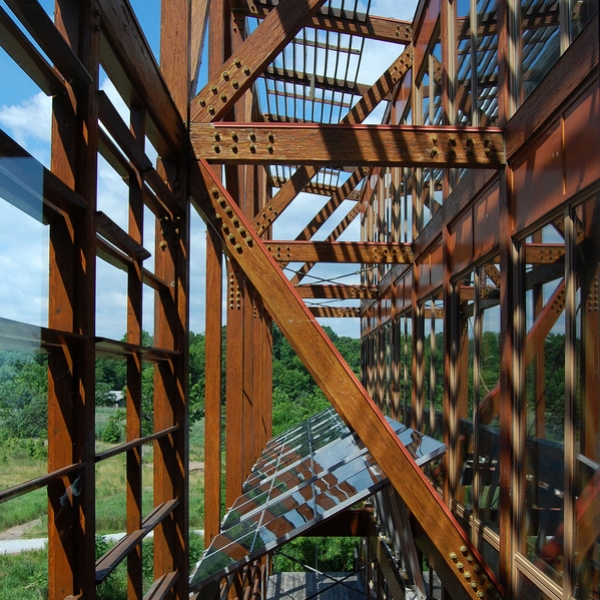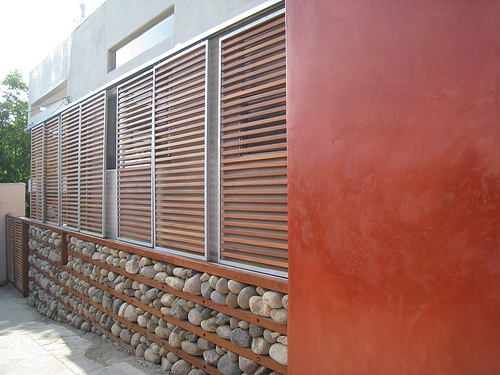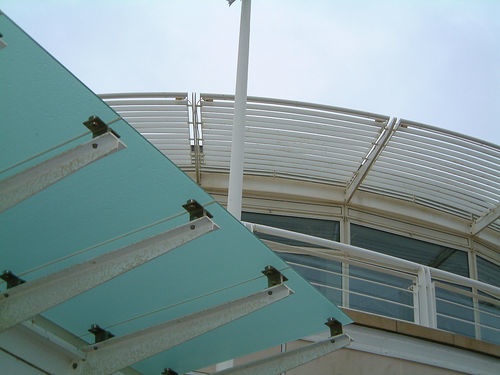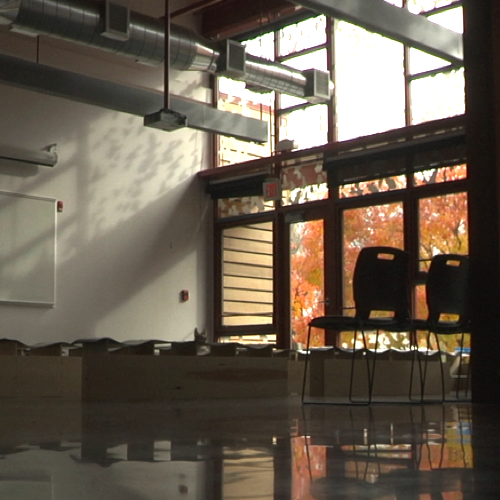Let the Daylight In
There are two different ways to harness the power of solar energy: active solar systems and passive solar systems. Solar panels and other solar energy collectors are considered active systems. Generally, their purpose is to collect, store and distribute solar energy to heat water or air inside a building. The term ‘passive solar’ refers to the process of constructing and orienting a building to take advantage of sunlight as a source of light and heat without the use of solar equipment. The goal, aside from the healthy benefits of natural light, is to reduce overall dependence upon mechanical systems.
 http://www.flickr.com/photos/gargola87/ / CC BY-SA 2.0
http://www.flickr.com/photos/gargola87/ / CC BY-SA 2.0
 Even though passive solar buildings do not use devices to collect and distribute power, they still need some method of storing the heat gained from solar radiation. The method they use is thermal mass. A material that is capable of storing heat (usually water or masonry) is designed into the structure; it absorbs heat during daylight hours and releases heat at night. Similarly, if it is shaded in the summer, the thermal mass can absorb heat from the air and cool a room.
Even though passive solar buildings do not use devices to collect and distribute power, they still need some method of storing the heat gained from solar radiation. The method they use is thermal mass. A material that is capable of storing heat (usually water or masonry) is designed into the structure; it absorbs heat during daylight hours and releases heat at night. Similarly, if it is shaded in the summer, the thermal mass can absorb heat from the air and cool a room.
Thick masonry walls, walls filled with water tubes, or exposed concrete floors can serve as thermal mass. A masonry fireplace is also a good option, since it doubles as a focal design element. Other alternatives, such as green roofs, are becoming popular means of providing thermal mass.

The longest wall of the building should face south; ideally, it will be oriented within 15 degrees of true south. The U.S. Department of Energy recommends using a sun path diagram to determine the path of the sun relative to the site in various seasons. Overhangs should be carefully designed so that they provide adequate shading. Some manufacturers are making louvered or perforated metal sunshade systems, which add an aesthetically pleasing element to the building’s design.
The square footage of glass included in the south-facing wall should be designed based upon a ratio of thermal mass area to window area. Fact sheets made available by various state DNR/green energy offices classify different types of passive solar homes and outline the percentages of window area that should be included in each.
When laying out the floor plan of a passive solar home, consider each room’s use when deciding upon its placement in the house. For example, the need for privacy will influence choice of wall mass vs. window area. “Buffer” rooms, like closets or storage rooms, which require little to no window area, should be placed on the north side of the building. These rooms can help the house maintain an even temperature. Kitchens and bathrooms are also good choices for this part of the house, because they often generate heat from appliances or hot water steam.
Case Study Spotlight: Grange Insurance Audubon Center
At the Grange Insurance Audubon Center, the design team utilized sun angle studies to determine where the shadow of the overhang would strike the glass. On the administrative wing, there is no direct summer sunlight into the building; rather it reflects off the light colored stones at the base of the building. The classrooms integrate both high, broad overhangs and intermediate shading shelves to minimize the heat of the summer sun. In the winter, the light enters deep into the classroom and administration spaces helping to warm the building.
The focus of “daylighting” is to reduce dependence upon electric lighting, substituting a functional amount of diffuse sunlight into a space. Daylighting is not intended to influence the air temperature of a room, but as with passive solar design, a building that utilizes daylighting must be designed from the outset with the site’s solar conditions in mind.
Direct rays of sunlight should not be admitted into the building because they can overheat the space and cause glare. Means of directing diffused light into the building include:
- Using architect-designed physical features to deflect and redistribute the light, or manufactured items such as light shelves or reflective panels.
- Using translucent glazing in windows, skylights, and clerestories.
- Using reflective ceilings and walls to cast light into interior spaces.
Admittance of east/west sunlight should also be avoided, as it changes too rapidly to be easily controlled. In contrast, sun coming from a southerly direction only changes seasonally. Local conditions are a huge factor in determining the siting and design of a daylit building; are skies often overcast, for example, or is the building located at a northern latitude where sun angles are particularly low?
In daylit buildings, electric lighting is usually on an automated dimmer system, the aim being to augment changing levels of daylight in a way that is seamless and unobtrusive to building occupants.
The final design of a daylit structure should always be tested using physical models. Consultants are available to help with daylighting designs.
The following is a video case study of the benefits of daylight harvesting in schools from the Douglas County School District in Colorado.
alt=""

Kristin Dispenza
Kristin graduated from The Ohio State University in 1988 with a B.S. in architecture and a minor in English literature. Afterward, she moved to Seattle, Washington, and began to work as a freelance design journalist, having regular assignments with Seattle’s Daily Journal of Commerce.
After returning to Ohio in 1995, her freelance activities expanded to include writing for trade publications and websites, as well as other forms of electronic media. In 2011, Kristin became the managing editor for Buildipedia.com.
Kristin has been a features writer for Buildipedia.com since January 2010. Some of her articles include:


